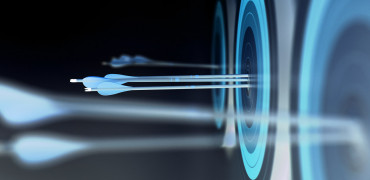Passivhaus is synonymous with low-energy buildings that also focus on occupant comfort and wellbeing. It’s a standard developed in Germany in the 1990s but is now recognised and applied worldwide (including in the UK through BRE).
The high standards of insulation, air tightness and good indoor air quality required by the Passivhaus standard make it an ideal model for buildings as the UK strives to meet its net zero carbon targets.
This means designing efficiency into our buildings from the start and adopting new approaches to building services such as heating and cooling.
The UK impact
In May 2022, the Scottish government proposed that all new-build housing in Scotland should meet the Passivhaus standard (or a national equivalent). This Proposed Domestic Building Environmental Standards Bill aims to improve the energy efficiency and thermal performance of housing in Scotland.
The foreword to the Bill by Alex Rowley MSP notes: “We cannot just rely on decarbonising the grid to meet our commitments. We must significantly improve the energy performance of our buildings.”
That certainly applies to all buildings across the UK. The switch from fossil fuel heating systems such as gas boilers to electric heat pumps is vital to achieving net zero, but we must focus on reducing our energy use simultaneously.
Setting an example
One recent example demonstrating this is the St Sidwell’s Point Leisure Centre near Exeter. The local council decided to use the building as an exemplar and used the Passivhaus standard to slash energy use while delivering high standards of comfort and health for visitors.
Designing a leisure centre to the Standard was challenging. These facilities require large amounts of hot water, mechanical ventilation and cooling – not easy to do while meeting stringent targets on energy use. But intelligent design, including the use of multi-climate zones within the building, has resulted in a 70% more energy efficient building (with an EPC of A) than a leisure centre designed for standard compliance.
Part of the solution was to capture heat from one part of the leisure centre and use it to supply hot water and space heating to other parts of the building. This was done via two heat pump chillers (Climaveneta NX-Q 4-pipe Integra systems).
As Sean Stewart, project manager for T Clarke, the engineering services specialists behind the design and installation of the MEP systems, says: “Unlike other Passivhaus buildings around the world which have no cooling, there are multiple cool and dry zones where cooling is provided via a simultaneous heating and cooling heat pump.”
(NOTE: A special thank you to T Clarke for the use of their photography)
A challenge that needs to be met
The Scottish government’s proposal to adopt Passivhaus standards for new homes would certainly put it among the front-runners in transforming the design and energy performance of dwellings – and it would undoubtedly have an impact on how housing is delivered in the region since the requirements go far beyond Parts L and F of the Building Regulations.
Commercial buildings pose more significant challenges than dwellings when it comes to achieving energy efficiency and carbon reduction in that they perform very differently depending on their purpose. A leisure centre has entirely different heating and cooling needs from an office, for example.
One crucial point about St Sidwell’s case is that the desire to achieve high-performance standards came from the client, and I think that this is something that construction professionals should note.
Legislation such as Part L has often been viewed as providing a ‘lowest common denominator’ approach to setting energy use and carbon emissions targets. But we are seeing a growing trend of clients and end-users asking for more than the basic requirements.
Final thoughts
As a society, we are now far more aware of our impacts on the environment. We see growing numbers of construction clients asking for the highest BREEAM or NABERS ratings – or Passivhaus standards. Therefore, the industry must prepare to adopt and work with new technologies and approaches, such as heat pumps and heat pump chillers. If clients want to lead the way to high-performing buildings, we should let them.
Stuart White is M&E Contractor Business Development Manager in the South and West of England, including Wales.
To contact Stuart to discuss your project, please email him on stuart.white@meuk.mee.com or visit our dedicated webpage for further information
Stuart White is M&E Contractor Business Development Manager.




